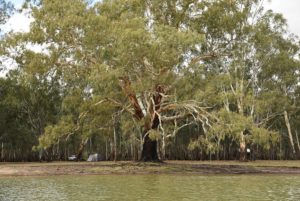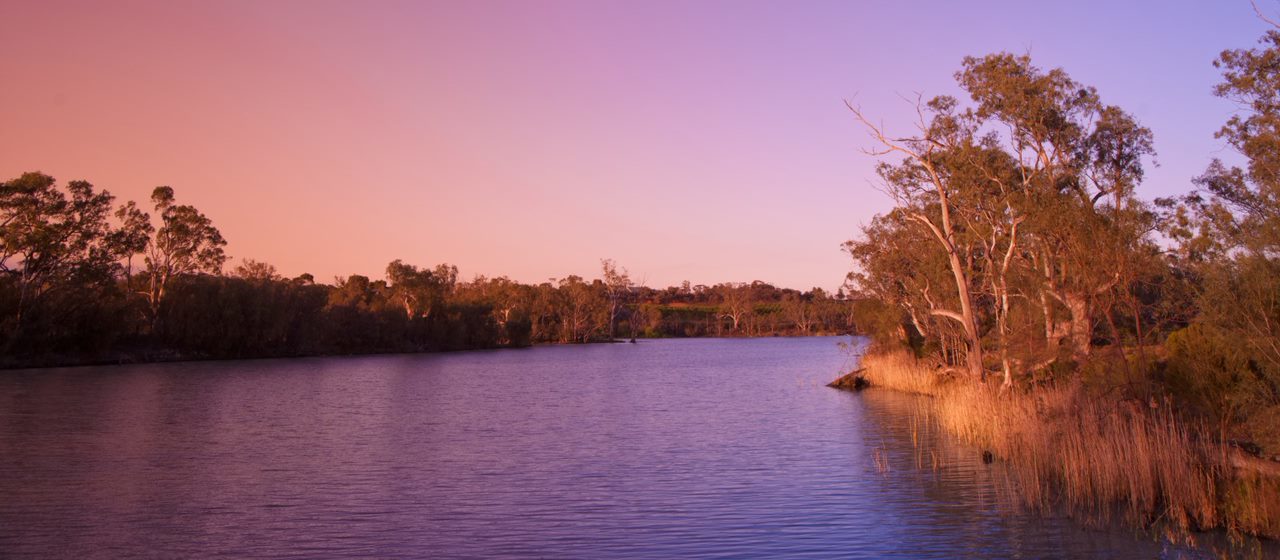Right now, we are in a period with water and political possibility. If we listen to life in the wetland, we can see these are the times to recover, re-establish and grow.
River Red Gums can tolerate around nine years without a good flood. When water finally flows over riverbanks and across the floodplain, these incredible trees can regenerate rapidly.
This is how arid and semi-arid wetlands in the Murray-Darling Basin survive. Some plants are remarkably drought-tolerant. Others, like the River Red Gum, have learned to recover quickly when wet conditions return.
This resilience is magnificent. It is also conditional.
Wetlands that have adapted to periodic extremes of drought depend on an otherwise-normal cycle of flooding. For River Red Gums, this means flooding around every three years. But with longer, more frequent periods without water, the trees struggle to bounce back.
In recent decades, these natural flooding flows have become far less common. It’s a result of too much water being taken for irrigation, a drier climate, and the ‘regulation’ of the river with dams and weirs. On the mid-Murray, smaller floods that used to happen every 1.5 years now happen every 4. Larger floods that traversed the floodplain every 2.4 years now come every 12.5. These aren’t conditions that confer resilience.

A giant river red gum on the banks of the Murray River in Barmah National Park, Yorta Yorta country.
Whether we’re looking at the resilience of wetlands, communities or government institutions, we can ask the same question: What happens when the period of recovery takes longer than the period of relief?
In water politics, we are entering one of those periods of relief now. The federal Labor government, elected in May, has committed to reviving the Basin Plan after nine years of the Coalition’s negligence.
It’s fortunate that the keystones of Australian water governance – the Water Act, the Basin Plan and the Murray-Darling Basin Authority (MDBA) – survived this period. But they are far from resilient.
Our previous government amended the Water Act, making it impossible to deliver the Basin Plan and return enough water to the river. They undermined the MDBA, publicly discrediting the organisation and placing a former petroleum lobbyist at its helm. They created an Inspector-General of Water Compliance and handed the role to a former NSW Nationals leader.
All the while, Coalition politicians stoked debate, division and confusion around the fundamental task of the Basin Plan: returning enough water to our rivers.
The new federal Water Minister Tanya Plibersek came to the portfolio after this extended drought of water leadership. She brought a strong plan for the Murray-Darling. It pledges to return long-awaited water to the river. To increase compliance, market integrity, climate research and First Nations’ ownership of water.

After years of neglect, this leadership could finally get the Basin Plan back on track. This is a moment of possibility, where we can make immediate gains. But isolated reforms are not enough – unless we win them in a way that builds strength for the long-haul. This speaks to the resilience we need for our communities and government institutions. And the resilience we need for the river, particularly as our climate gets hotter and drier.
Right now, there are two very different ideas of what this looks like in Victoria. The first is a greenwashing exercise from the Victorian government called the Victorian Murray Floodplain Restoration Project (VMFRP).
These projects plan to re-engineer wetlands to survive with less water, by cutting off portions of the floodplain from the river. Occasionally, pumps and channels will siphon water from the river to keep some River Red Gums on life support, while sacrificing other parts of the floodplain entirely.
Perversely, the projects also come with an offset. “Water savings” from the project would justify withholding water from the rest of the river system – a total 605 billion litres. This water would instead stay in the accounts of big corporate irrigators.
These projects ask us to resign to a disastrous future: a dying river, with a few isolated museum pieces of preserved wetlands. All so a few big irrigators can make more money.
The second alternative is for a living river, where water is free to flow and flood. This is what makes life in the river possible.
Floods allow native fish to travel to floodplain wetlands. It is where Golden Perch and Silver Perch prefer to live and where Murray Cod go to breed. Waterbirds also look for floods, with Little Pied Cormorants, Great Egrets and White-Necked Herons nesting and breeding in flooded River Red Gums. When floodwaters recede back to the river, they bring nutrients and carbon to support all river life.

Clockwise from left: Eastern Great Egret, White-necked Herons and White-faced Heron; Australasian Darter Nest; Swamp Lily floweing in Little Reedy Lagoon. Credit Damien Cook, Wetland Revival Trust
Getting water into these ecosystems requires floods where some water needs to pass over private property. But dams, low-lying bridges and rules against letting water over private land are stopping this from happening. Only 2% of the floodplain is receiving the water that’s been set aside for it. While we have the mechanisms and funds to find a solution, we’re waiting on political will.
These two pathways – wetland engineering or natural flows – present a simple choice. The first is to look at the disaster to come, resigning ourselves to the promise of calamity. The second is to look honestly at the disaster that is already here. To recognise the dying Black Box, drying wetlands and missing waterbirds – and to attend to them.
In dry times, life has been waiting quietly in wetlands. Through bulbs, rhizomes and tubers. Patient and resilient.
Right now, we are in a period with water and political possibility. With recent rain, storages are brimming across the Basin and Victoria’s largest dam will spill any day. These are the times to recover, re-establish and grow.
Life along the river should come flooding back. But unless we seize the opportunity to do more, only some of it will.